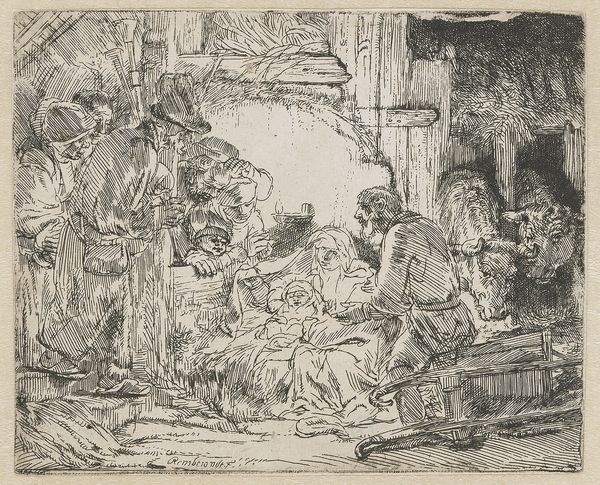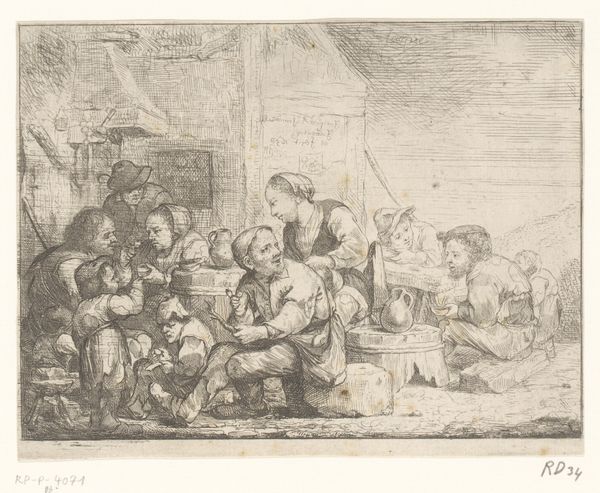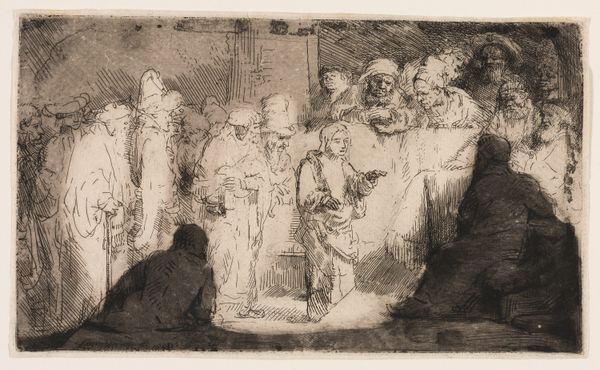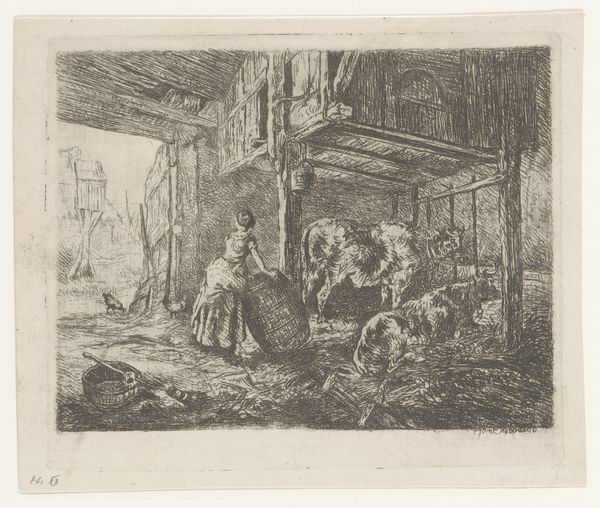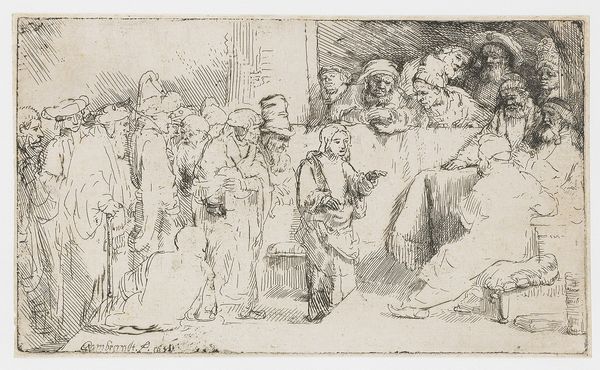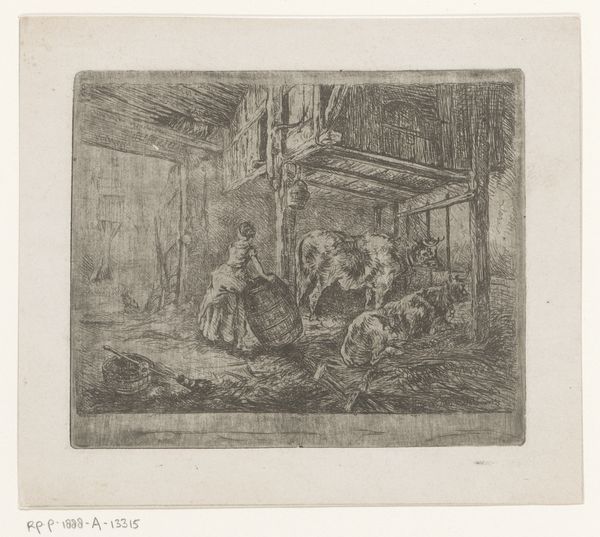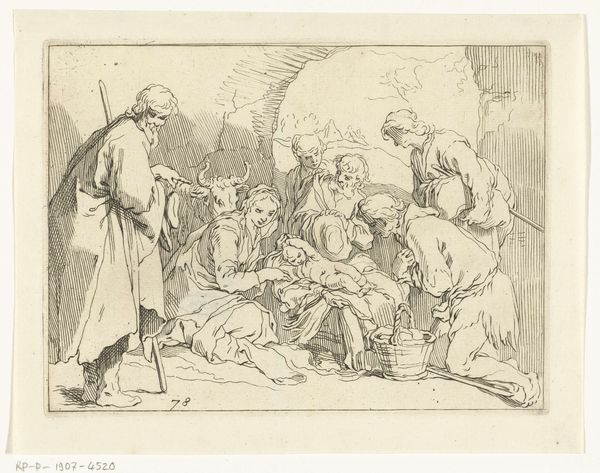
Dimensions: height 105 mm, width 128 mm
Copyright: Rijks Museum: Open Domain
Rembrandt van Rijn created this etching of the Adoration of the Shepherds in the Dutch Republic, most likely in the 1650s. In contrast to earlier, grander depictions of the Nativity, Rembrandt sets the scene in what appears to be a humble, perhaps even dilapidated, stable. This domestic portrayal connects the holy event to the everyday lives of ordinary people. The scene is illuminated by the light of a single lamp, a key visual element that enhances the intimacy and warmth of the gathering. The image reflects the religious and social context of the Dutch Republic at the time. The rise of Protestantism encouraged a more personal and direct relationship with religious narratives, a shift away from the opulence of the Catholic Church. Rembrandt’s choice to depict the shepherds, figures from the lower strata of society, emphasizes the Christian message of humility and inclusiveness. To understand the full meaning of this work, scholars investigate not only its formal elements but also the religious, economic, and social conditions of the Dutch Golden Age. In doing so, we can appreciate how Rembrandt's image both reflects and speaks to its own time.
Comments
No comments
Be the first to comment and join the conversation on the ultimate creative platform.

